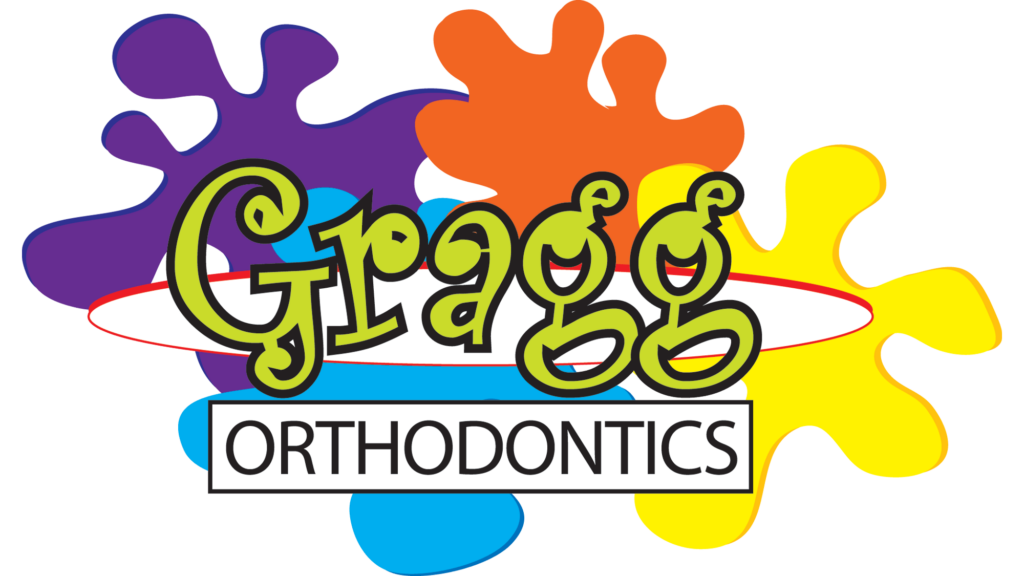As parents, we want the best for our children, and their oral health is no exception. A bright smile is not just about aesthetics; it’s a reflection of overall well-being. That’s why, at Gragg Orthodontics, we believe that early orthodontic care plays a crucial role in ensuring your child’s lifelong oral health. In this article, we’ll explore the question that many parents ask: “When should my child see an orthodontist?”
Orthodontics isn’t just for teenagers; it can benefit children as well. Early evaluation and intervention can help prevent potential issues from becoming more serious down the road. We’ll take you through the journey of understanding when and why your child should see an orthodontist, setting the foundation for a lifetime of confident smiles and optimal oral health. So, let’s dive in and discover the importance of timely orthodontic care for your child’s smile.
Understanding Orthodontic Issues
Before we delve into when your child should see an orthodontist, it’s essential to understand what orthodontic issues may arise during childhood. Orthodontic problems can vary from person to person, but some common concerns include:
Malocclusions:
This term refers to misalignments of the teeth or improper relationships between the upper and lower jaws. Malocclusions can lead to difficulty chewing, speech issues, and aesthetic concerns.
Crowding:
When there isn’t enough space in the mouth for all the teeth to align correctly, crowding can occur. This can make it challenging to clean between teeth, increasing the risk of cavities and gum disease.
Spacing Issues:
On the flip side, excessive space between teeth can also pose problems. Gaps can impact speech, create aesthetic concerns, and make it challenging to bite and chew properly.
Overbites and Underbites:
An overbite occurs when the upper front teeth overlap the lower front teeth excessively. Conversely, an underbite occurs when the lower front teeth protrude in front of the upper teeth. Both conditions can affect speech, eating, and jaw comfort.
Understanding these common orthodontic issues is crucial because early detection and intervention can often prevent them from becoming more severe. Your child’s oral health is unique, and that’s why Gragg Orthodontics takes a personalized approach to care, tailoring treatment plans to address specific concerns. So, as we explore when your child should see an orthodontist, keep in mind that early evaluation can make a significant difference in your child’s oral health journey.
Early Signs to Watch For
As a parent, it’s essential to be proactive when it comes to your child’s oral health. While an orthodontist will make a professional evaluation, you can keep an eye out for some early signs that might indicate the need for orthodontic care:
Difficulty Chewing:
If your child has difficulty biting or chewing food, it could be due to misaligned teeth or bite issues. This can impact their nutrition and overall health.
Speech Difficulties:
Speech impediments can be related to the positioning of teeth or the alignment of the jaws. If you notice persistent speech issues, it’s worth considering an orthodontic evaluation.
Thumb-Sucking Habit:
Prolonged thumb-sucking or pacifier use can lead to dental issues, including misalignment of the teeth. Breaking these habits early can help prevent orthodontic problems.
Mouth Breathing:
Chronic mouth breathing, especially during sleep, can affect the development of the upper and lower jaws. This can lead to orthodontic issues that may need early intervention.
Early Tooth Loss or Delayed Tooth Eruption:
If your child experiences early tooth loss or significant delays in tooth eruption, it’s a good reason to consult an orthodontist. These issues can affect the development of the dental arches.
While these signs may not necessarily indicate an immediate need for orthodontic treatment, they can serve as red flags. It’s advisable to schedule an orthodontic evaluation if you observe any of these early signs. At Gragg Orthodontics, we’re committed to providing timely and personalized care for your child, ensuring that their smile develops beautifully and healthily.
The Ideal Age for a First Orthodontic Visit
One of the most common questions parents ask is, “When should my child see an orthodontist?” The American Association of Orthodontists (AAO) recommends that children have their first orthodontic evaluation by around the age of seven. You might wonder why such a young age?
The reasoning behind this guideline is that by the age of seven, many children have a mix of adult and baby teeth. This transitional stage provides orthodontists with valuable insights into your child’s oral development. It’s not about starting treatment immediately but rather about assessing the potential for future orthodontic issues.
At this early stage, orthodontists can identify subtle problems that may not be apparent to parents. They can assess how a child’s teeth and jaws are developing and anticipate any potential challenges. Early detection allows for timely intervention if needed, preventing more severe issues from developing.
It’s important to note that not all children who have their first orthodontic evaluation at age seven will require treatment at that time. In many cases, orthodontists will adopt a “wait-and-see” approach, monitoring your child’s growth and development until the most opportune time for treatment.
So, while the ideal age for a first orthodontic visit is around seven, don’t worry if your child’s orthodontist doesn’t recommend immediate treatment. The goal is to ensure that your child’s smile develops healthily and beautifully, and early evaluation is a critical step in achieving that.
Benefits of Early Orthodontic Intervention
You might wonder why early orthodontic intervention is necessary when your child still has baby teeth. The truth is that addressing orthodontic concerns early on can provide a range of benefits for your child’s oral health and overall well-being:
Preventing Serious Issues:
By evaluating your child’s oral health at an early age, orthodontists can identify and address potential problems before they become more complex and require extensive treatment.
Optimizing Jaw Growth:
Early intervention allows orthodontists to guide the growth of your child’s jaws, ensuring that they develop in a way that accommodates all their permanent teeth.
Creating Space:
For children with crowded teeth, early intervention can create space for permanent teeth to come in correctly. This can prevent the need for more invasive treatments later on.
Improving Bite Alignment:
Addressing bite problems early can lead to better chewing and digestion, reduced risk of jaw pain, and enhanced speech.
Boosting Self-Esteem:
A healthy, aligned smile can significantly boost your child’s self-confidence, helping them feel better about their appearance during crucial developmental years.
Streamlined Treatment:
In some cases, early intervention can shorten the overall duration of orthodontic treatment when it’s needed later. It’s all about setting the stage for a more efficient and effective treatment journey.
Remember that not every child will require early orthodontic treatment, and that’s perfectly normal. The key is early evaluation, which allows orthodontists to determine the ideal timing for any necessary interventions. At Gragg Orthodontics, we’re committed to providing personalized care that optimizes your child’s oral health and sets them on the path to a confident, beautiful smile.
What to Expect During the First Visit
Bringing your child for their first orthodontic visit might feel like a significant step, but it’s a straightforward and informative process. Here’s what you can expect during that initial appointment at Gragg Orthodontics:
Warm Welcome:
Our team is dedicated to creating a friendly and comfortable environment for both you and your child. We understand that this might be a new experience, and we’re here to make it a positive one.
Comprehensive Evaluation:
The orthodontist will perform a thorough examination of your child’s oral health. This assessment includes evaluating their teeth, jaws, bite alignment, and any potential concerns.
X-rays and Imaging:
In some cases, X-rays or other imaging may be necessary to gain a complete understanding of your child’s dental and skeletal development.
Discussion and Questions:
You’ll have the opportunity to discuss any concerns you may have and ask questions about your child’s oral health and potential treatment options.
Personalized Treatment Plan:
If orthodontic treatment is recommended, the orthodontist will outline a personalized treatment plan tailored to your child’s unique needs. They will discuss treatment options, duration, and any other relevant details.
Next Steps:
You’ll leave the appointment with a clear understanding of what the next steps might be. This could include scheduling follow-up appointments, starting treatment, or simply continuing to monitor your child’s development.
Remember that your child’s first orthodontic visit is primarily about evaluation and education. It’s an opportunity for both you and your child to learn more about their oral health and any potential orthodontic concerns. Gragg Orthodontics takes pride in providing families with a welcoming and informative experience, ensuring that you leave with confidence in your child’s dental journey.
Customized Treatment Plans
One of the hallmarks of Gragg Orthodontics is our commitment to providing personalized care for each and every patient, including your child. We understand that every smile is unique, and that’s why we create customized treatment plans to address your child’s specific needs and goals.
After the initial evaluation, if orthodontic treatment is recommended for your child, our orthodontists will work closely with you to develop a treatment plan tailored to their unique circumstances. This plan takes into account factors such as the type of orthodontic issues present, the best treatment approach, and the anticipated duration of treatment.
Our team believes in clear communication, so we’ll take the time to explain the proposed treatment plan to you and your child in a way that’s easy to understand. We want you to be actively involved in the decision-making process, ensuring that you feel informed and confident about the treatment journey ahead.
Whether your child’s treatment plan involves braces, aligners, or other orthodontic solutions, you can trust that it will be designed with their comfort, well-being, and long-term oral health in mind. We’re here to answer your questions, address any concerns, and guide you every step of the way, ensuring that your child’s smile transformation is as smooth and successful as possible.
Conclusion
In the world of orthodontics, timing is everything. While you might be wondering when your child should see an orthodontist, the answer often lies in early evaluation and proactive care. At Gragg Orthodontics, we believe in setting the stage for a lifetime of confident smiles and optimal oral health.
Early orthodontic intervention, when necessary, can prevent minor issues from becoming major concerns. It can optimize jaw growth, create space for permanent teeth, and improve bite alignment. Perhaps most importantly, it can boost your child’s self-esteem, setting them on a path to face the world with a confident and beautiful smile.
The ideal age for a child’s first orthodontic visit is typically around seven, but remember that not all children will require immediate treatment. Early evaluation allows orthodontists to determine the most opportune time for any necessary interventions, ensuring that your child’s oral health journey is efficient and effective.
What can you expect during your child’s first visit to Gragg Orthodontics? A warm welcome, a comprehensive evaluation, personalized treatment planning, and clear communication at every step.
We’re here to guide you and your child through this exciting and transformative journey. Our commitment to providing customized care ensures that your child’s smile will receive the attention it deserves.
So, when should your child see an orthodontist? The answer is as unique as their smile, but the Gragg Orthodontics team is here to help you navigate the path to a lifetime of oral health and confidence. Schedule that first appointment, and let’s get started on creating a smile that shines bright for years to come.

